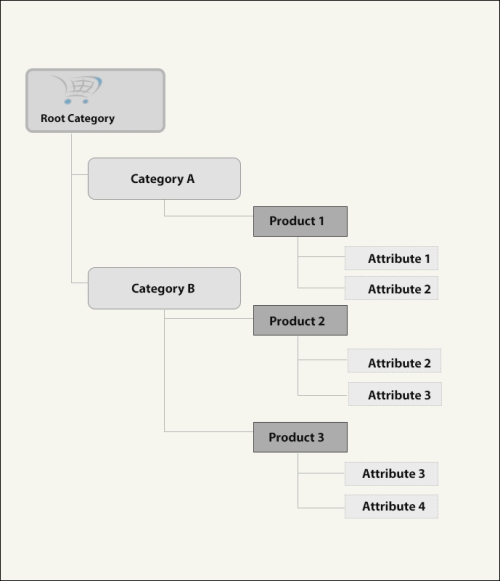Now that you have already done the basic configuration of your store, it's time to start thinking about products. Magento has everything you could wish for built-in. But the extended possibilities also mean that you need to carefully plan and execute your product catalog. Therefore, we're using multiple chapters to explain Magento's product functions.
This chapter will cover:
- Creating the right product settings for your store
- Understanding the way Magento handles products
- Setting up your own product attributes and attribute sets
- Working with categories to create logical structures for your products
Although Magento is preconfigured to immediately start entering your products, we recommend that you take some time to think about your product catalog before you do so. Of course it's easy to just start and see where you'll end up, but if you are serious about setting up your store, you must take some time to prepare it.
Let's first quickly have a look at the meaning of the various Magento keywords we'll use throughout this chapter:
- Catalog defaults: These are the settings in Magento that influence the behavior of your products.
- Product categories. This is the simplest one to understand. Your products will be put into a product category used for navigation purposes by your visitors and to create a logical structure of products throughout your store. As an example, a clothing store could have two main categories: men and women. Underneath those you would find shirts, trousers, underwear, and so on.
- Product attributes: Simply speaking, these are the fields you'll use to create your products. You have products in the Shirts category? Then it makes sense to use a field named Color and a field named Size for instance. In Magento, we call these fields attributes. You have complete flexibility here to determine what fields you want to use and you can create your own fields as well.
- Attribute sets: Fortunately you do not have to choose the fields you want to use for every product over and over again. This is where the attribute sets come in. An attribute set is a combination of various attributes, setting all the fields you'll need for a certain type of product. When creating a product, you'll select the attribute set it belongs to. By doing so, all the fields you need will automatically become available. Maybe this is still a bit theoretical, but we'll soon see the power of this principle in practice.
- Product catalog: This is your product database containing all the products for your complete Magento installation. Remember that we spoke about websites and store views earlier in Chapter 2, General Configuration. Product attributes can differ as per the level and it is possible to make your products visible or invisible as per the website.
All together you'll have complete control over your product catalog. And even if you are running multiple online stores using one Magento installation, it is still possible to use products in such a way that it isn't necessary to create any duplicate products, just because you would like to display different information in the various stores you are running.
Before you continue, remember that it is important to carefully think about your attributes and attribute sets. Once a product has been created, it's no longer possible to change the attribute set of that product! Besides that, your attributes will be used by visitors when browsing your store. Features such as Magento's famous layered navigation and comparison function heavily rely on a proper setup of your attribute sets.
Let's say that we are running an online store selling apparel, such as trousers, shirts, dresses, and shoes. We first have to create a logical category structure that makes sense for our visitors. Remember that your visitors will use your category structure to browse through your store and find the products they are looking for. So, try to think from the customers' perspective when creating your category structure.
Our example isn't very difficult, we see these kinds of online stores all the time and most of them are more or less following the same approach.
The following structure is what we could create. We kept the structure rather simple. Not everything will be in it yet, but this example is just used to explain what you can do using Magento:

This example shows you the category structure we created, but also shows some products in it, which have different attributes. To be able to create the products, we would need different attribute sets for every possible combination of attributes.
